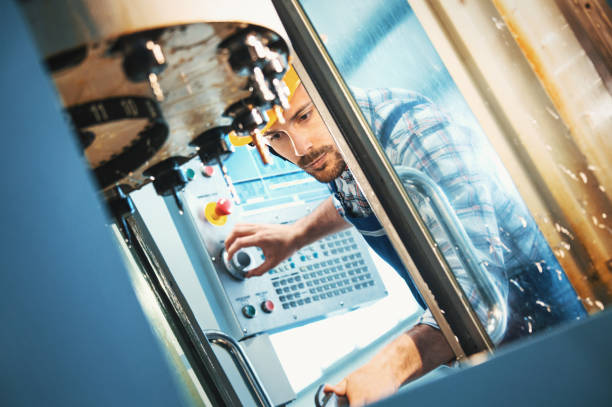Operating a CNC milling machine is a fundamental skill in modern manufacturing, whether for hobbyists, engineers, or industry professionals. Understanding how to use a CNC milling machine can open up a wide range of possibilities for machining complex parts with precision. This guide will provide a detailed breakdown of how to use a CNC milling machine, covering the entire process from setting up to executing precise cuts. We will also explore the various types of milling, machine components, and practical tips for efficient operation.
Understanding CNC Milling Machines
What is CNC Milling?
CNC milling is a type of machining process that utilizes rotating cutting tools to remove material from a workpiece, which can be metal, plastic, or wood. CNC (Computer Numerical Control) involves using computer commands to control the movements and actions of the machine. This automation makes CNC milling incredibly precise and efficient, perfect for both complex prototypes and mass production.
The CNC milling machine works by moving either the cutting tool or the workpiece along multiple axes—typically X, Y, and Z. These movements are precisely controlled by G-code, which is a language created in CAD and CAM software to command the machine.
Key Components of a CNC Milling Machine
- Spindle Motor: The spindle holds the cutting tool and rotates at high speed to remove material. An example is the 2.2KW ER20 Air-Cooled Spindle, known for its robustness in milling operations.
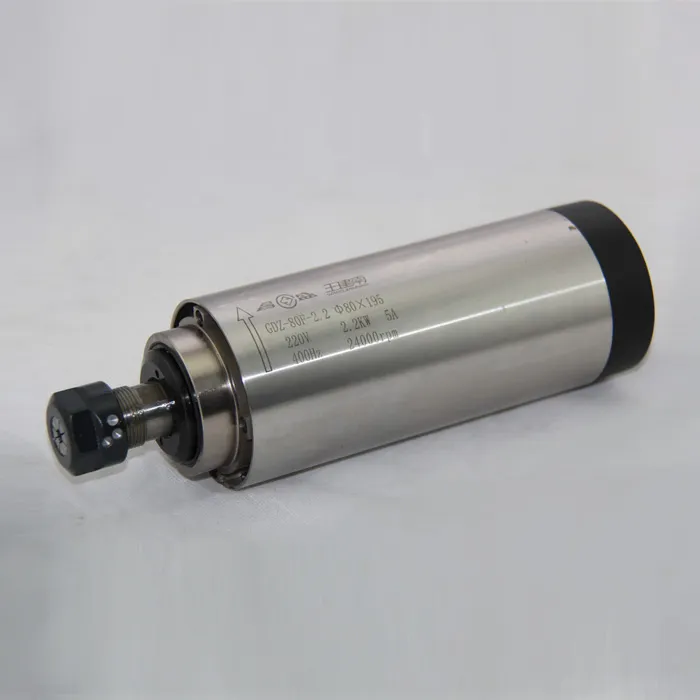
- Worktable: The surface where the material, known as the workpiece, is placed and clamped securely.
- Cutting Tool: The rotating tool that makes cuts into the material. Tools vary depending on the type of milling—end mills, ball mills, etc.
- Controller: The computer interface where you input commands and control the CNC milling machine.
- Axes: CNC milling machines typically move along three axes—X (left to right), Y (front to back), and Z (up and down).
Internal Link: Visit our CNC Spindle Motors to explore our variety of spindle options for optimal milling performance.
Types of CNC Milling Machines
Vertical vs. Horizontal Milling Machines
- Vertical Milling Machine: The spindle is oriented vertically, making it perfect for face milling and drilling operations. Vertical mills are popular due to their versatility.
- Horizontal Milling Machine: The spindle lies horizontally, allowing for the heavy cutting of complex workpieces. Horizontal milling machines are ideal for cutting slots and grooves.
| Feature | Vertical Milling Machine | Horizontal Milling Machine |
|---|---|---|
| Spindle Orientation | Vertical | Horizontal |
| Typical Uses | Drilling, face milling | Slot cutting, heavy material removal |
| Workpiece Movement | Primarily along Z-axis | Movements along multiple axes |
Internal Link: Learn more about our 24000RPM 800W ER11 Water-Cooled Spindle to boost the efficiency of your vertical or horizontal CNC machine.
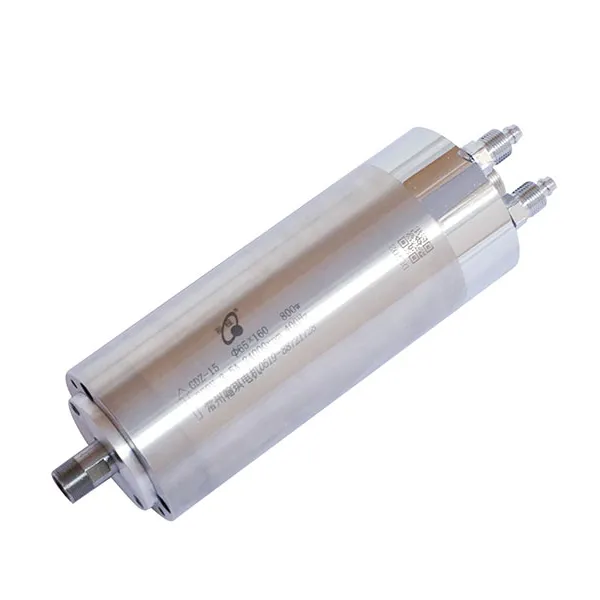
Preparing for CNC Milling Operations
Step 1: Setting Up the Machine
- Safety First: Always wear safety glasses and gloves to protect yourself from chips and dust.
- Mounting the Workpiece: Secure the workpiece to the worktable using clamps or a vise to ensure that it does not move during milling.
- Tool Selection: Choose the appropriate cutting tool based on the type of material and the milling operation.
- Machine Calibration: Set the zero point on the X, Y, and Z axes. The zero point is the reference point for the machine to begin milling operations.
Step 2: Loading and Generating G-code
G-code is the programming language that controls the movements of a CNC milling machine. To create G-code:
- CAD Design: Start by designing the part using CAD software like AutoCAD or SolidWorks.
- CAM Processing: Use CAM (Computer-Aided Manufacturing) software to create toolpaths and generate the G-code. Fusion 360 and Mastercam are popular options.
- Loading G-code: Load the G-code into the machine using a USB, SD card, or direct computer connection.
Internal Link: Check out our 60000RPM 1.2KW ER11 Water-Cooled Spindle for precise operations, especially when using advanced G-code for CNC projects.
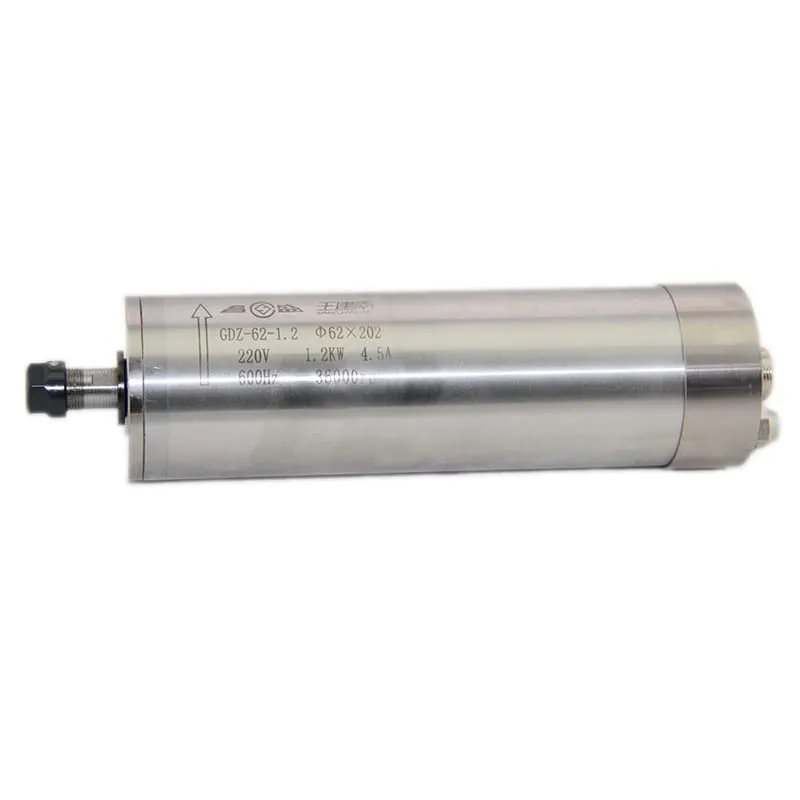
Milling Techniques and Operations
1. Face Milling
Face milling is used to create a flat surface on the workpiece. The cutting tool moves along the X and Y axes to create a smooth, flat face.
- Tools Used: End mills or face mills.
- Application: Typically done to prepare the surface for further operations.
2. Plain Milling
Plain milling, also known as slab milling, is used to create flat surfaces on a larger scale. This method is best for removing a large amount of material quickly.
- Tools Used: Wide end mills.
- Benefits: Fast and efficient for larger workpieces.
3. Form Milling
In form milling, specialized tools called form cutters are used to create complex shapes and profiles. This is particularly useful when creating gears, splines, or other non-standard shapes.
- Tools Used: Form cutters that match the profile of the desired shape.
- Application: Often used for the production of parts that require unique profiles or complex geometries.
Practical Tips for CNC Milling
1. Tool Selection and Maintenance
Selecting the right tool is essential for successful milling. The geometry of the tool, cutting material, and the type of cut required all influence the tool selection.
- End Mills: Ideal for making slots and contours.
- Ball Nose Mills: Best for 3D milling and curves.
- Tool Maintenance: Always keep tools sharp to reduce heat generation and ensure precision.
2. Optimizing Feed Rate and Spindle Speed
Setting the correct feed rate and spindle speed is crucial for achieving the desired cut quality.
- Feed Rate: Defines how quickly the tool moves across the workpiece.
- Spindle Speed: Refers to the rotation speed of the cutting tool.
- Best Practice: Consult material-specific guides to optimize these settings to avoid issues like tool deflection or burning.
Internal Link: Enhance your milling operations with our 1.5KW ER11 Round Air-Cooled Spindle, perfect for maintaining consistent feed rates.
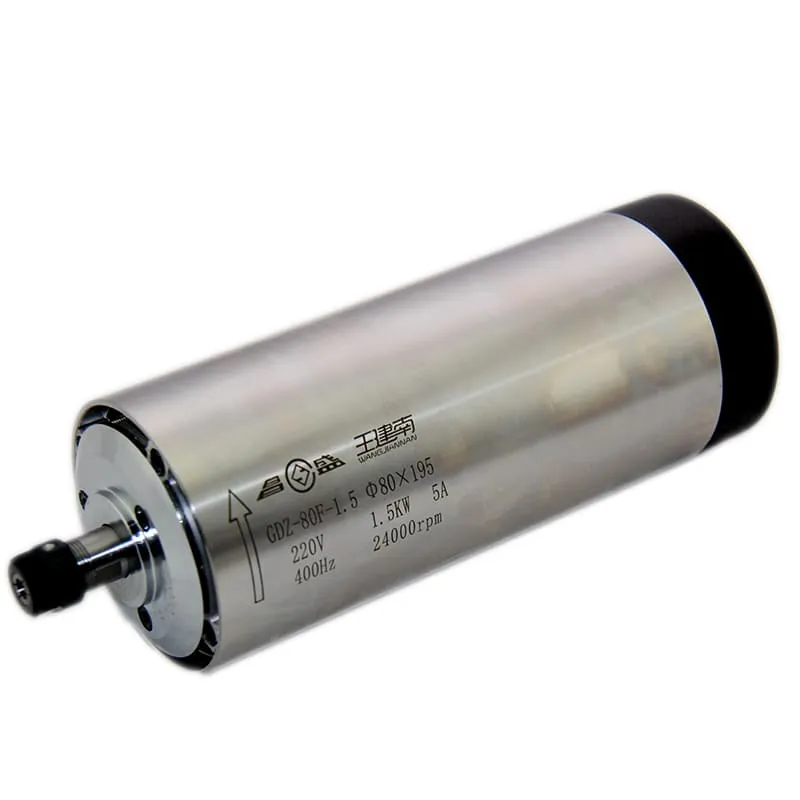
Safety Precautions for CNC Milling
Personal Protective Equipment (PPE)
- Safety Glasses: To protect your eyes from flying chips.
- Ear Protection: CNC milling machines can be noisy, so ear plugs or muffs are advisable.
- Gloves: Use gloves when handling raw materials, but remove them during machine operation to avoid entanglement.
Emergency Stop Procedures
Every CNC milling machine is equipped with an emergency stop button. Be sure to understand its location and function before starting any milling operation. The emergency stop should be used whenever there is a potential risk to the operator or the machine.
Frequently Asked Questions (FAQs)
1. How do I choose the right cutting tool for a CNC milling machine?
The choice of cutting tool depends on the material, the type of milling operation, and the desired finish. End mills are versatile, while ball nose mills are better for 3D work.
2. What is G-code, and why is it important?
G-code is a language that tells the CNC machine how to move, cut, and perform operations. It includes instructions for speed, feed rate, and tool paths.
3. Can I run a simulation before milling?
Yes, many CNC machines and CAM software provide a simulation feature that allows you to see the toolpath and detect any potential issues before actually cutting the material.
4. Is CNC milling suitable for beginners?
While CNC milling can seem complex, beginners can start with simple projects and gradually move to more complex designs as they gain experience. Plenty of tutorials and software features can guide newcomers.
5. How do I avoid material waste in CNC milling?
To minimize material waste, ensure accurate workpiece clamping, use optimized toolpaths, and run a simulation before actual milling. These practices ensure more precise cuts and reduce errors.
Conclusion
Using a CNC milling machine opens up a world of possibilities in precision manufacturing and creative projects. From understanding the components to learning the different milling operations, mastering CNC milling takes practice, patience, and the right tools.

